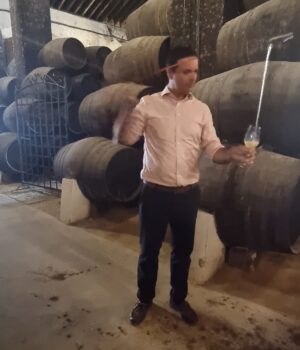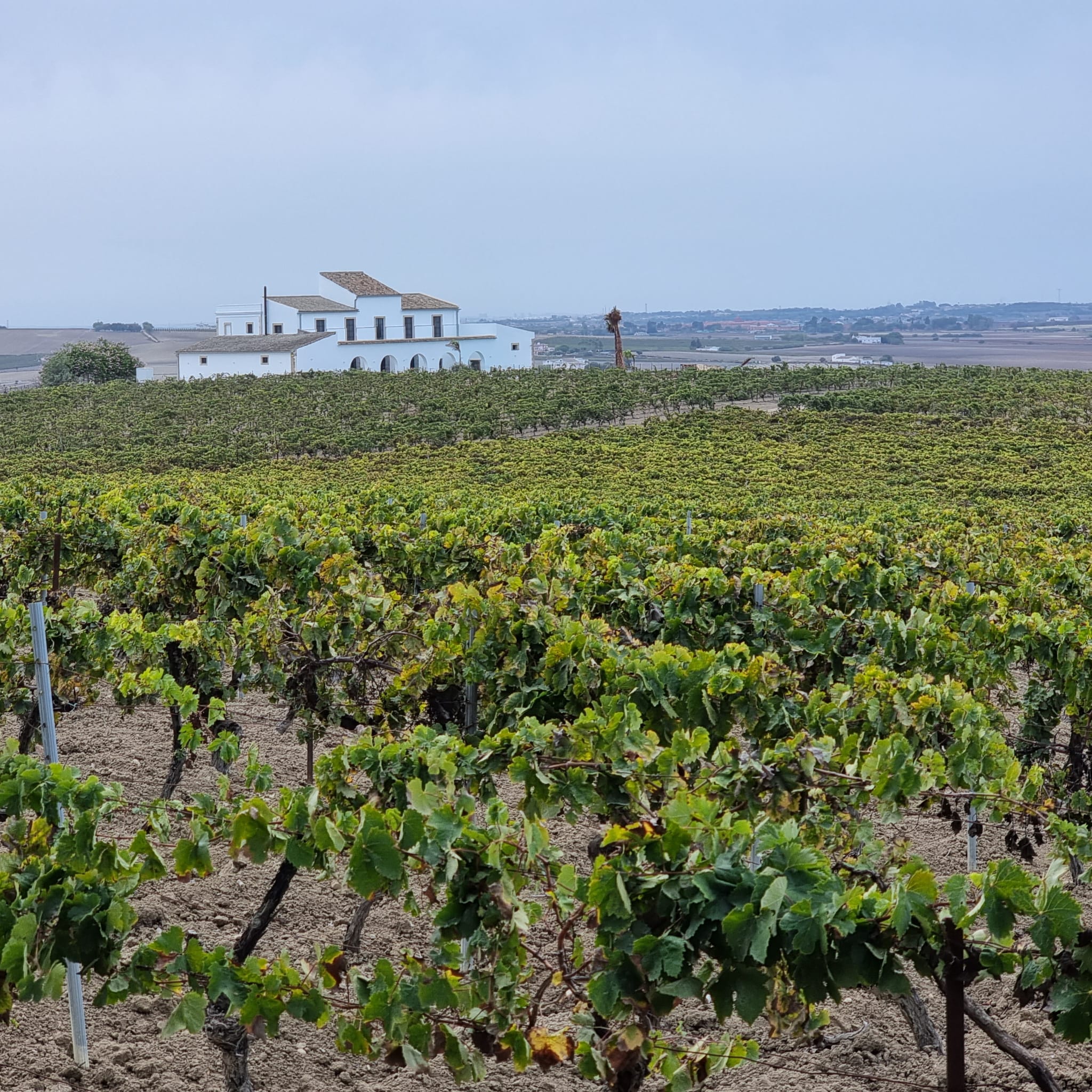Manzanilla and shrimp, a perfect marriage, raised Sanlúcar de Barrameda, the only place where the famous wine is produced, to be the capital of Spanish gastronomy 2022 along with other products such as the "Spunta" potato.
The city of Cádiz is impregnated with the smell of Manzanilla. The twenty wineries -many of them former convents-, the only ones that can produce this wine, are located in the urban area.
Sanlúcar de Barrameda, capital of Manzanilla
The prevailing west winds, which come here from the nearby Doñana park, allow, together with mild temperatures and high humidity, the breeding of the so-called “veil of flower”. It is a natural yeast that evolves inside the barrel. La Manzanilla, based on palomino grapes, is made using a traditional method, unique in the world, which has been passed down from generation to generation. This method is known as criaderas y soleras. With this dynamic system, wines with different levels of aging are methodically blended. The barrels are stacked one on top of the other to allow cascade racking, which is done three or four times a year.
Bodegas Barbadillo It has not stopped producing Manznailla since 1821. Its cellar, known as a “cathedral”, with high ceilings, windows through which air enters and blackened columns - there is 70% humidity and little light - houses 5.000 barrels. The climatic conditions and the dynamic aging system result in a dry, saline and fresh wine. "This saline nuance is only found in Manzanilla," says Montse Molina, winemaker from Barbadillo. The emblem of Barbadillo is the Castillo de San Diego, one of the best-selling white wines in Spain. She explains the “prejudice that exists towards Manzanilla that it is alcoholic because it has 15 degrees, which makes one think that it is not a wine, when it is a wine. They are wines that require experience to be able to understand them, just like a dark chocolate”.
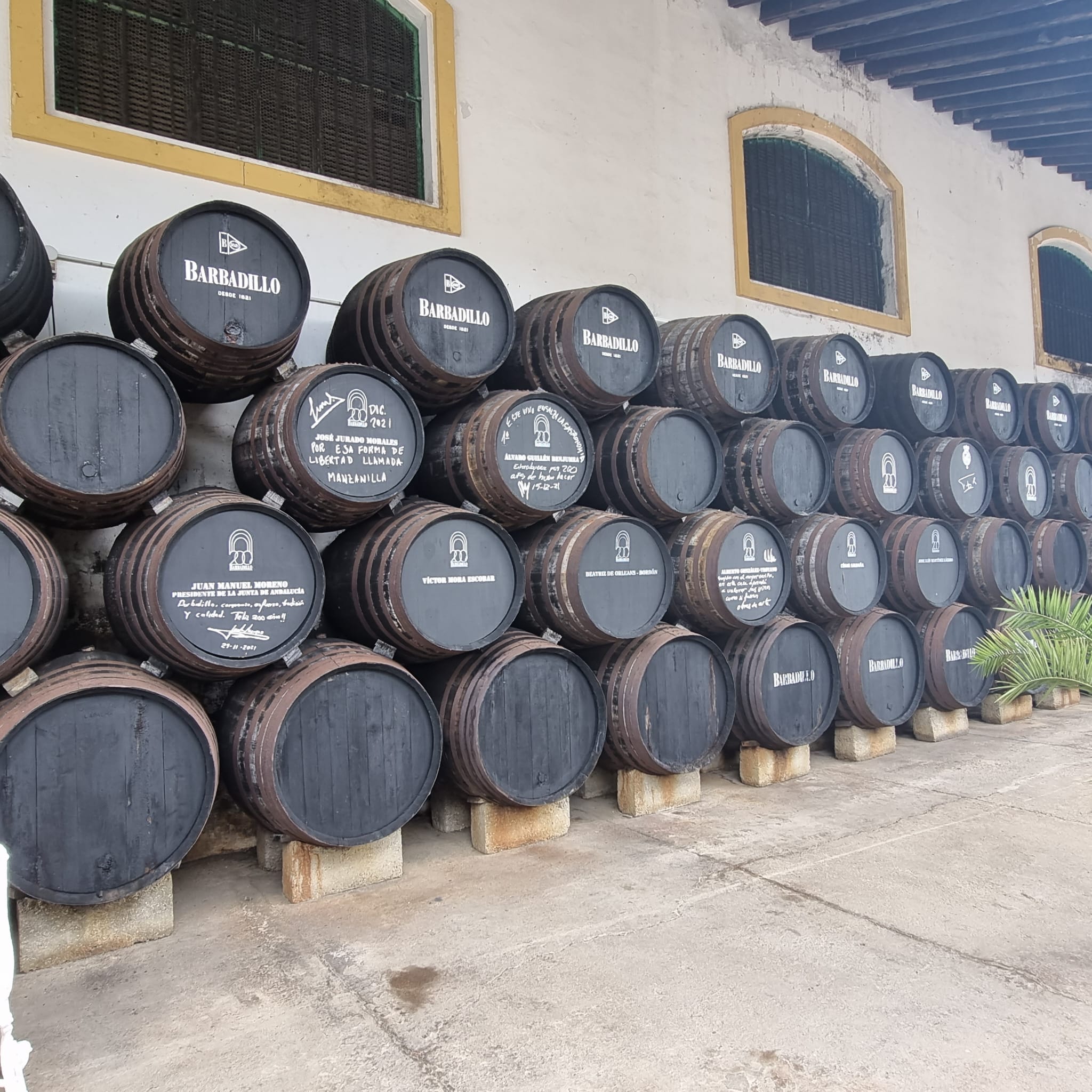
Manzanilla, a DO within another DO
The DO Manzanilla is geographically within the DO del Jerez, with whom he shares the same Regulatory Council. The market is contracting: from the 22.000 hectares of Palomino grapes that existed in the 70s, it has gone down to the current 7.000. And if 11.000 kilos per hectare were obtained before, now between 7.000 and 9.000 are obtained.
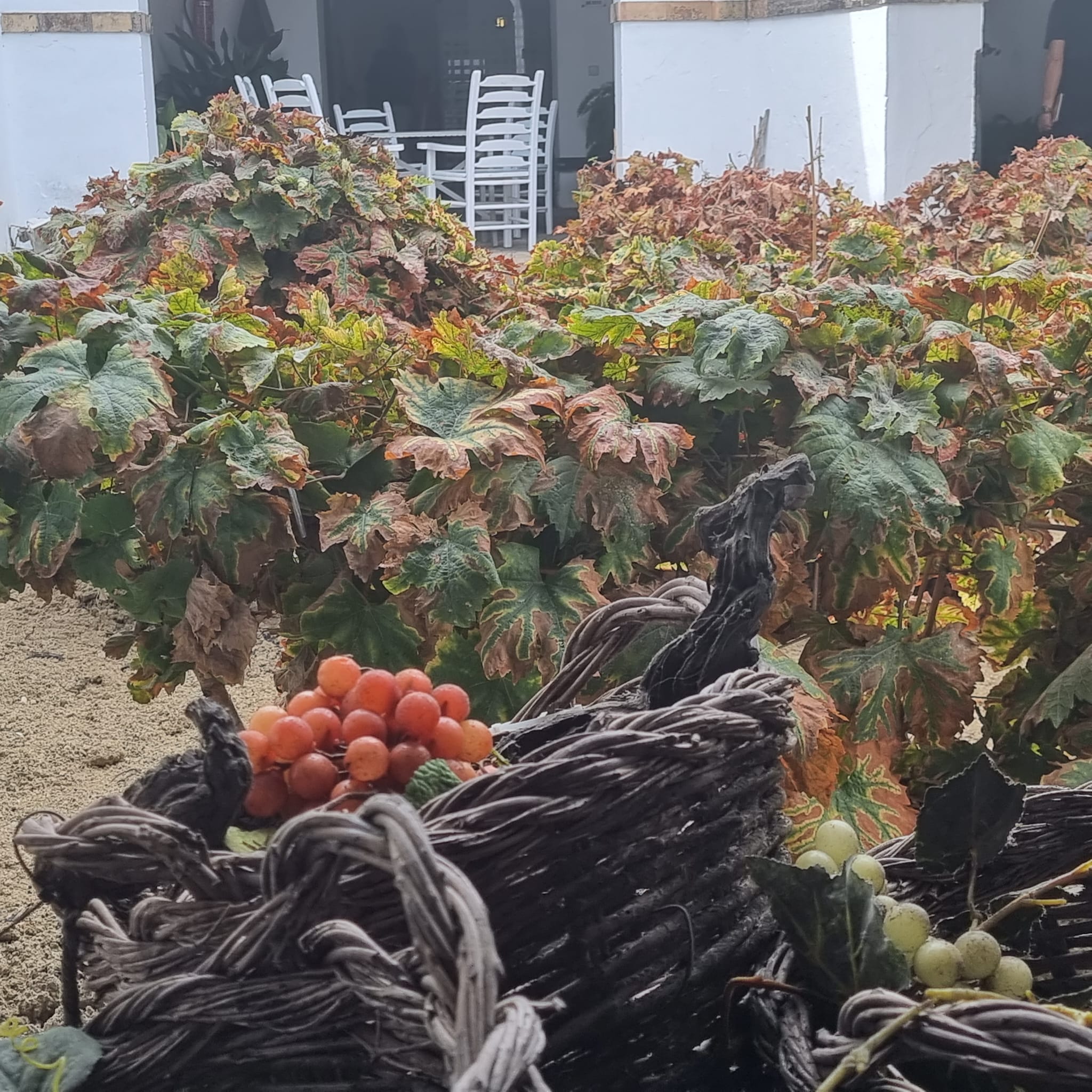
Due to climate change, the harvest was carried out for the first time this year in July -normally it is at the end of August and beginning of September- and 30% less grapes have been collected. After four years of drought, the last normal harvest was in 2018, explains Fermín Hidalgo, from Hidalgo La Gitana Winery, the oldest in the area, founded in 1792. It is the third largest producer of chamomile, with 700.000 liters per year. La Manzanilla La Gitana has become the most popular both nationally and internationally. With 10.000 visits a year, the winery -14 meters high- is the most visited in Sanlúcar.
Hidalgo defines Manzanilla as "the driest wine in the world". And, “just as with red wines one gets sleepy, Jerez and Manzanilla are the wines of joy”. Regarding the pairing, Hidalgo explains that due to its salinity "it is an excellent product with everything that swims", while the amontillado "goes very well with everything that flies", such as foie, and the oloroso "with everything that goes around". , such as Iberian prey and matured meat.
The prawn, king of the gastronomic capital
With the Sanlúcar prawn, the king of Cadiz cuisine, Manzanilla forms an authentic delicatessen, a perfect marriage. The shrimp is found in shallow waters of the fishing ground in the Gulf of Cádiz. The trawling fleet of the port of Bonanza -with about 55 boats dedicated to this type of fishing gear- is the main one in charge of their catches, although the trammel net boats also do it. One of the identifying elements to differentiate the Sanlúcar shrimp from other specimens caught in the Atlantic or the Mediterranean is its tail, which is blue.
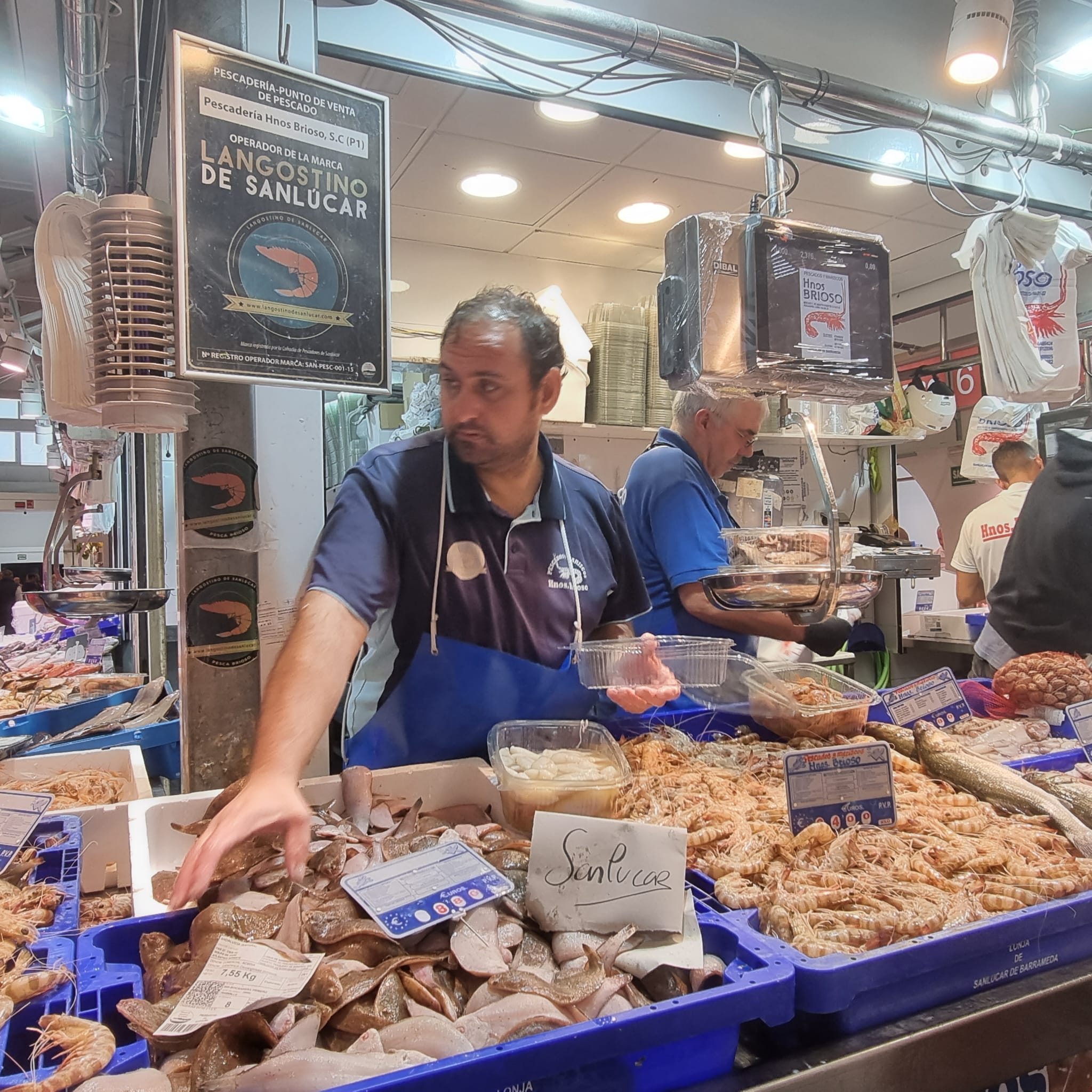
Saline land, special flavor
This saline land that borders Sanlúcar has a great agricultural tradition. Among its products, sweet potatoes, sweet potatoes, “Spunta” potatoes and peppers stand out, perhaps because it was here one of the first places where they landed from America. Its star product is the potato, grown in sand and to which its brackish water gives it a very special flavor. Its planting houses 250 hectares in La Algaida, with a very high yield per hectare in its two annual campaigns (the production is between 70.000 and 90.000 kilos per year). The Spunta variety, which reaches the market with its unmistakable fine sand, is the one used for the famous Sanlúcar aliñás potatoes.
Write: Monica Uriel. Journalist


